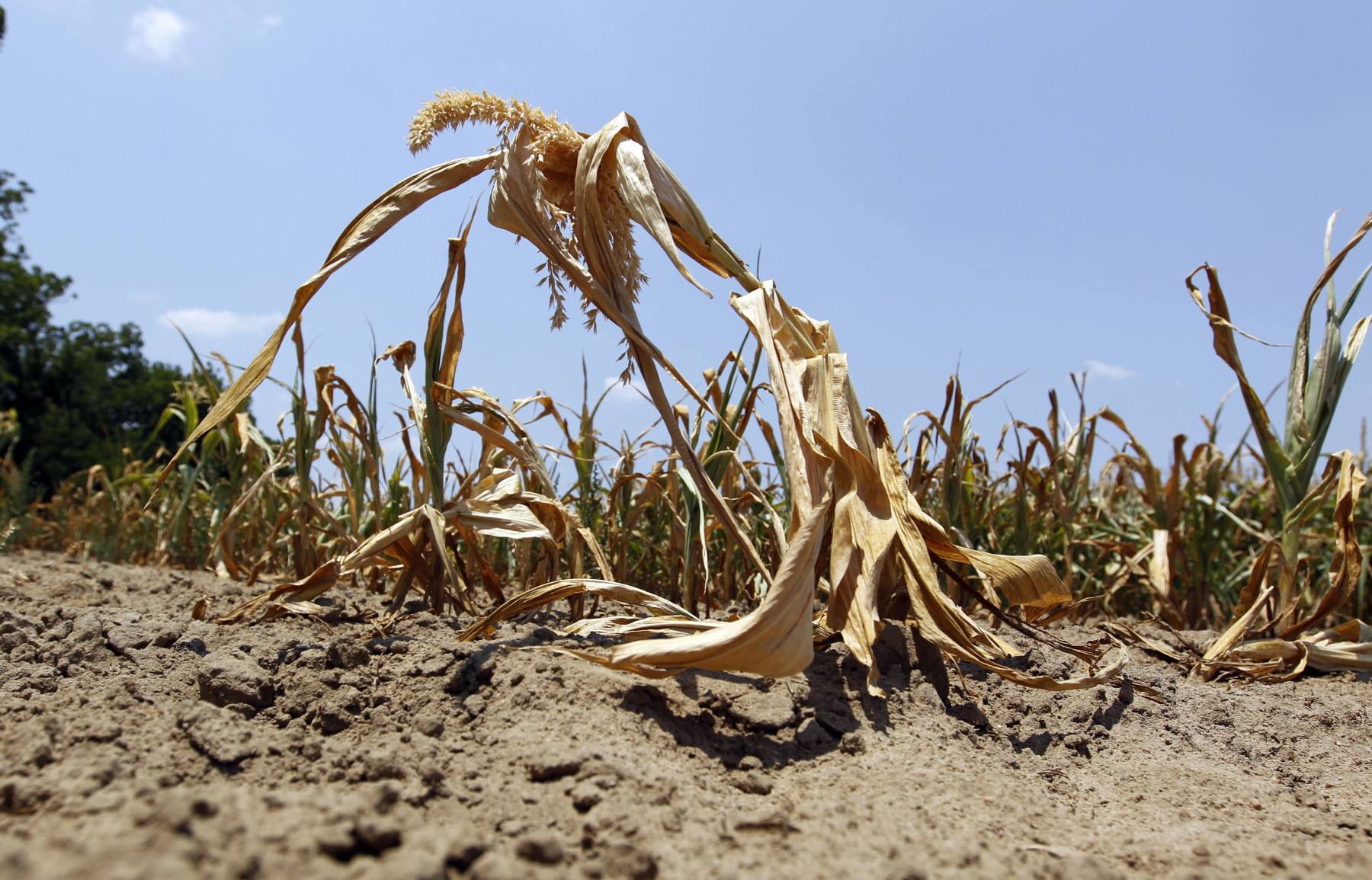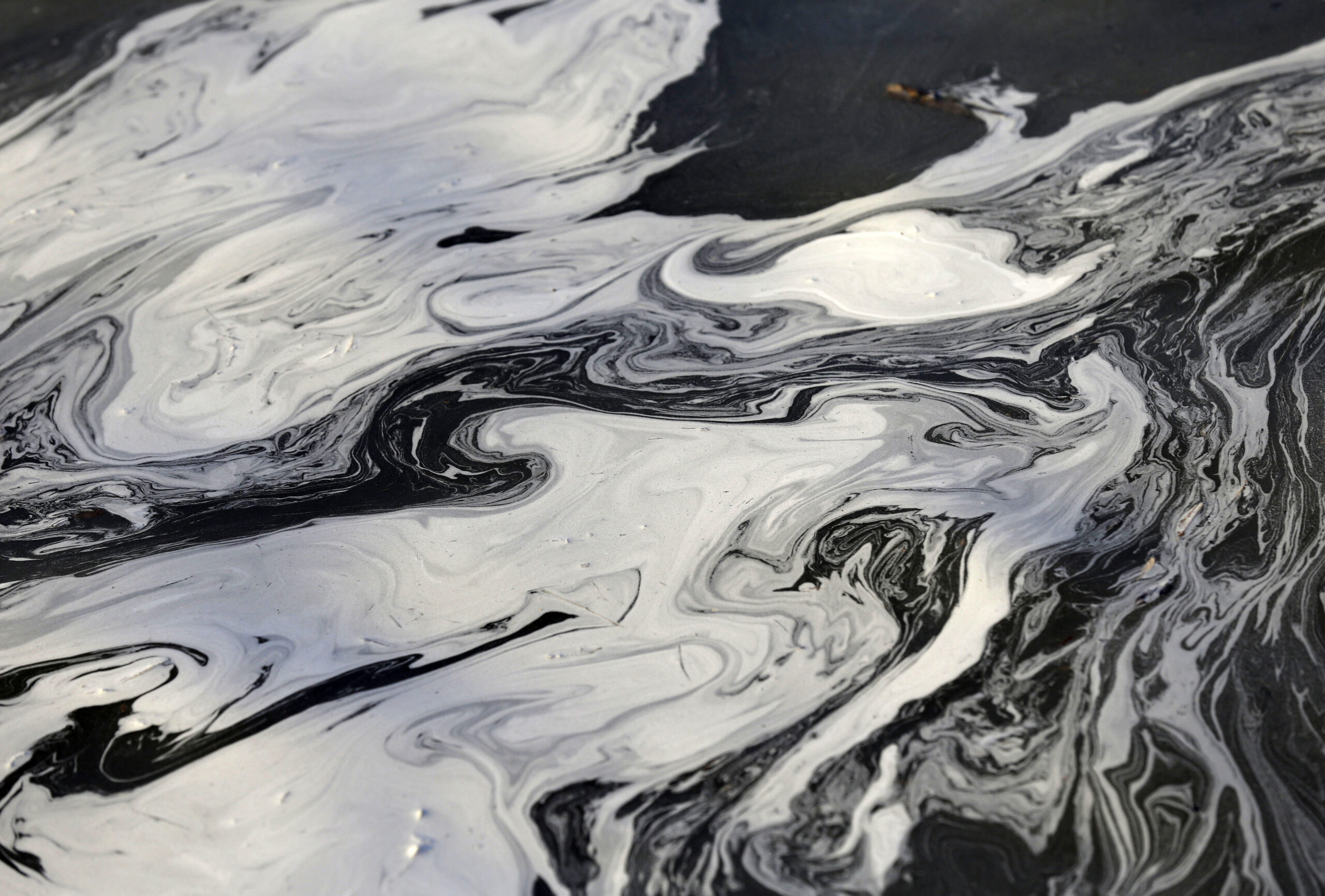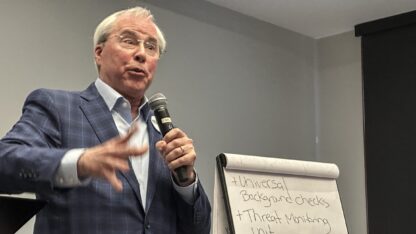How More Flash Drought Research Could Be Helpful In Georgia

Wilted corn is shown in 2011 on a farm in Oglethorpe, Georgia. While the state has been dealing with a lot of rain lately, researchers are encouraging more focus and research on flash droughts and how to improve prediction capabilities. The information could be helpful to farmers, for example, and help them better prepare.
John Bazemore / Associated PRess file
Maybe you wish it would just stop raining in Atlanta.
Last summer, it kind of did.
“In July, it almost literally stopped raining — not quite literally — but we got 35% of our normal rainfall in the months of July, August and September,” said Katherine Zitsch, manager of natural resources at the Atlanta Regional Commission.
It was also really hot.
“What was falling was evaporating back into the sky or getting soaked up by the soil,” Zitsch said. “So it ended up that our water supply was going down, especially Lake Lanier. We saw it drop 4 feet in three months.”
Lake Lanier is the main source for metro Atlanta’s drinking water.
Georgia farmers were affected, too.
“A lot of our pastures and hayfields just were declining very, very rapidly,” said Paul Pugliese, the agriculture and natural resources extension agent in Bartow County.
In October, the state instituted a drought response, requiring public information campaigns about water use. Some communities on the south side of metro Atlanta instituted stricter water use rules.
This all happened relatively quickly. The lack of rain, plus the unusual heat, added up to what’s called a flash drought.
It’s a phenomenon people in the world of water would like to see get more attention.
“One of the reasons these droughts are interesting is because they have a lot of impact,” said Angie Pendergrass, an atmospheric scientist at the National Center for Atmospheric Research. “And there’s not a whole lot of research in the past that’s been looking at them.”
In a recent article in the journal Nature Climate Change, Pendergrass encouraged more focus and research on flash droughts, to improve prediction capabilities.
“It’s only more recently where we’re starting to be able to hope that we can make better forecasts on a short enough time scale,” Pendergrass said.
She said somewhere between a weather forecast and a longer-term drought outlook, say, a couple weeks, could give people a chance to prepare.
Pendergrass and her co-authors also suggested ways to define what counts as a flash drought, raised questions about how climate change influences them and made a point of highlighting that droughts aren’t just a topic for scientific inquiry, they’re real-life things that affect communities.
Zitsch said improved forecasting, both to figure out when a drought might start, but also when it might end, would be helpful for Atlanta.
“We never know whether a drought is a three-month drought like this one was or a three-year drought,” she said. “We haven’t really had federal funding to get into the more complicated long-term predictions on droughts. So we don’t have the science yet to know whether it’s short or longer, and we can’t really see them coming as well as you can with a flood or a hurricane.”
With more notice, for instance, the Georgia farmers whose hayfields dried up last summer might have been able to prepare more. As it is, Pugliese said, some are still feeling lingering effects of last year’s flash drought, even though it officially ended in December.







